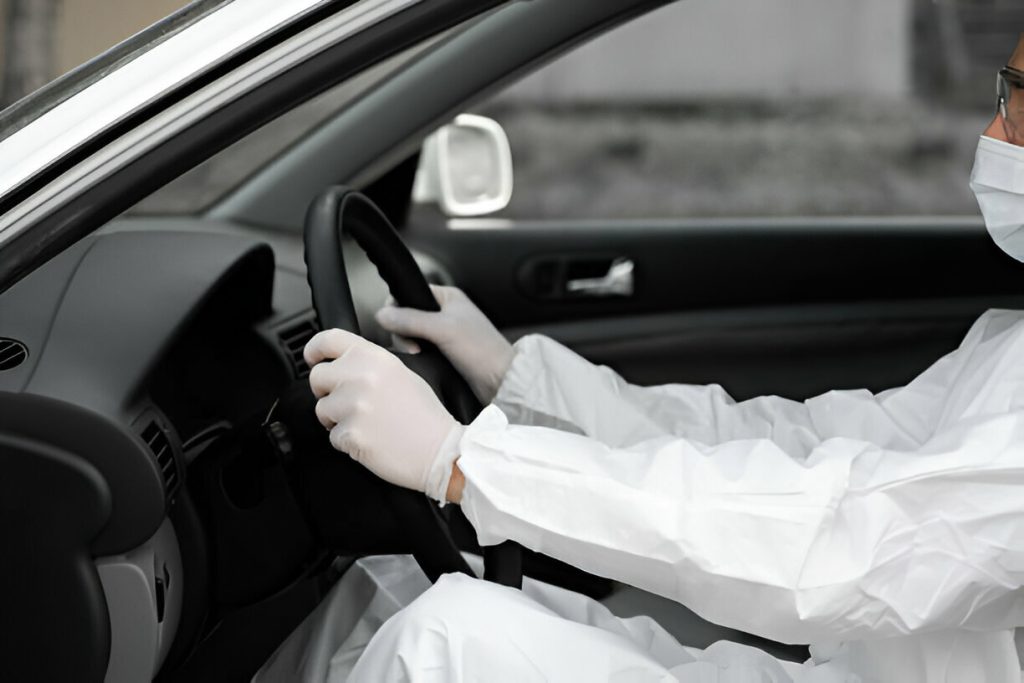When the COVID-19 outbreak first occurred in many countries worldwide, it affected different sectors of the economy. The motor industry was not spared, and automobile manufacturing almost stopped completely when lockdowns and restrictions were employed. Where production was possible for a few units, demand had already dropped.
Nonetheless, the motor industry came to life gradually. Some analysts even believe that it evolved and became even better. As the industry adapts, it is also crucial to keep an eye on emerging technologies and how copyright law is evolving in response to AI-driven innovations in automotive design and manufacturing. This article aims to examine the difficulties the motor industry faced during the pandemic.
Impact of COVID-19
Many automobile manufacturing industries closed their production lines due to government restrictions and for the safety and health of their employees. These closures resulted in a steady drop in automobile production. In addition, the global supply chains were affected since most parts and materials suppliers also stopped their operations.
The restrictions on social contacts during the lockdowns, business hours, and leisure traveling time were minimized. That led to lower incomes, which affected the demand for automobiles. The reduced revenues of automobile manufacturers stranded many automobile dealers on the brink of shutting down their businesses for good.
In addition, the reduced cash flow meant that many firms were considering letting go of some of their workforce to save some more for fixed costs.
The Recovery Journey
After long months of strict measures, the manufacturers began to find ways to bring back production while dealing with the pandemic. That included introducing many measures to ensure the safety of the workers on their premises.
These measures included social distancing, constant hand washing, and the use of personal protective gear, such as gowns, gloves, and masks. Consumer protection ensured that manufacturers prioritized the safety of their workers, enabling them to resume operations and steadily ramp up production.
More importantly, new methods and technologies have emerged that will facilitate production more efficiently and produce affordable cars, bikes, and other automobiles.
Here are some of the processes that were introduced.
Digital Marketing
Due to the shutdown of showrooms, automobile manufacturers and dealers shifted to digital ways to connect with buyers. They partnered with major online magazines and automobile news websites to give information about cars, bikes, farm machinery, and other motors and what was trending in the market, including offers. This shift toward digital strategies mirrors the fashion industry’s move toward sustainable e-commerce, influenced by COP29’s push for eco-conscious business models. That saw a moderate rise in people asking for more information and making orders that would enable them to move around as public transport remained closed.
Years after, online sales and marketing, assessment, sale, and contactless delivery have become more popular in the motor market. For instance, if one needs to know more about cars, bikes, and other automobiles, one can view the latest car news from Motomotar or other reliable sites, including detailed reviews and upcoming releases. Companies also configure their websites to accommodate secure transactions right from the comfort of clients’ homes or personal offices.
Innovative Production
The motor industry was gradually switching towards electric automobiles even before the pandemic. However, the pandemic disrupted this, especially because most manufacturing companies aimed to produce environmentally friendly products. In Oakland, the housing sector has also mirrored this trend, with eco-friendly housing developments gaining popularity as buyers prioritize sustainability.
Governments also played a major role in offering incentives, such as tax incentives, for people who wished to own these vehicles to make the green move a success. Hence, that prompted a number of automobile makers to intend to produce electric automobiles and do away with ICE ones.
The pandemic, which introduced social distancing, gave an idea or two on automating processes. That boosted the knowledge and awareness of digital and autonomous vehicles that use AI and IoT systems for enhanced security, comfort, and efficiency. Even though fully automated cars are not yet a reality, almost every new model that has been launched in the market today contains some AI functionalities, including adaptive cruise control, and lane-keeping assistance. As your business grows into tech-heavy industries, having a company lawyer helps you manage patents and product liability risks.
Adaptation to Essentials
The competitiveness of automobile production brought some changes in the type of electrical that automobile manufacturers can produce. They realized they could tap into their existing resources to produce what society and other sectors needed at that time. Depending on the level of flexibility, which dictates what else they can manufacture and demand, they switched easily from one line to the other. For instance, some manufacturers have changed from producing car electronics to ventilators and other medical appliances. This move eased hospitals’ strain when dealing with chronic COVID-19 patients. Similarly, the growing frequency of natural disasters, such as the LA fires, is forcing insurers to reassess their policies, leading to significant shifts in the insurance market impact nationwide.
Some car manufacturers also opted to produce other automobiles that they hadn’t produced due to their line of specialization in order to give clients what they could afford. For example, there was a rise in the production of motorbikes that promoted social distance and ease of moving through uncrowded places.








